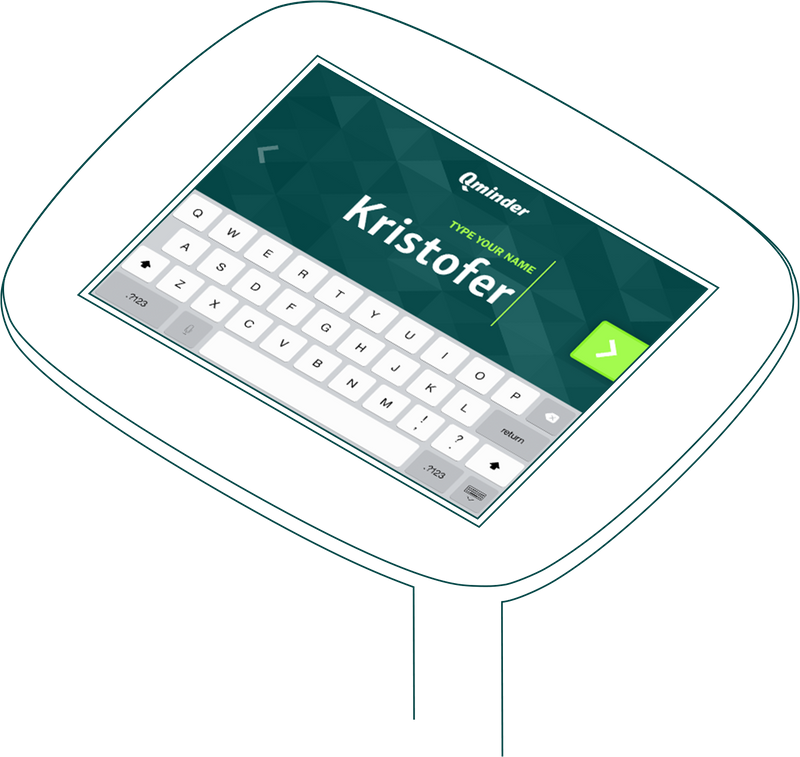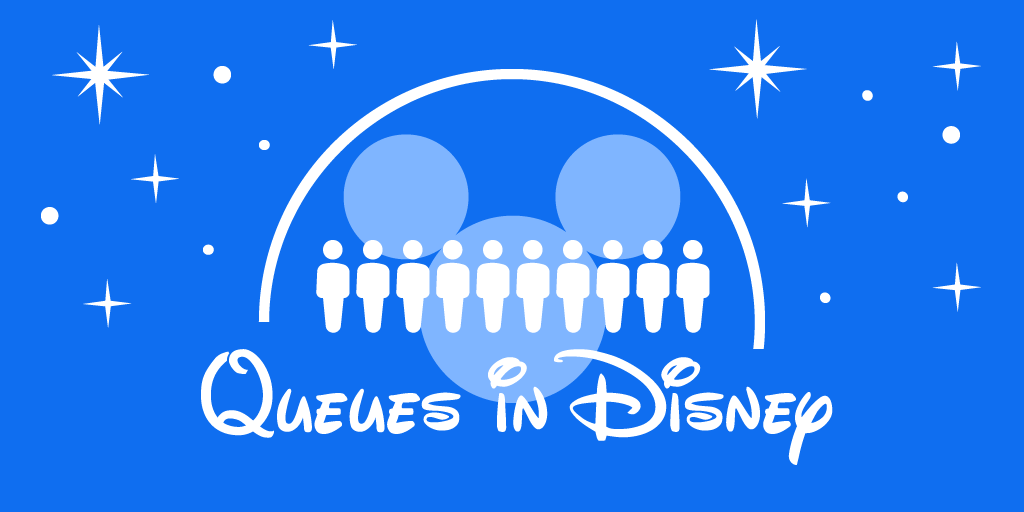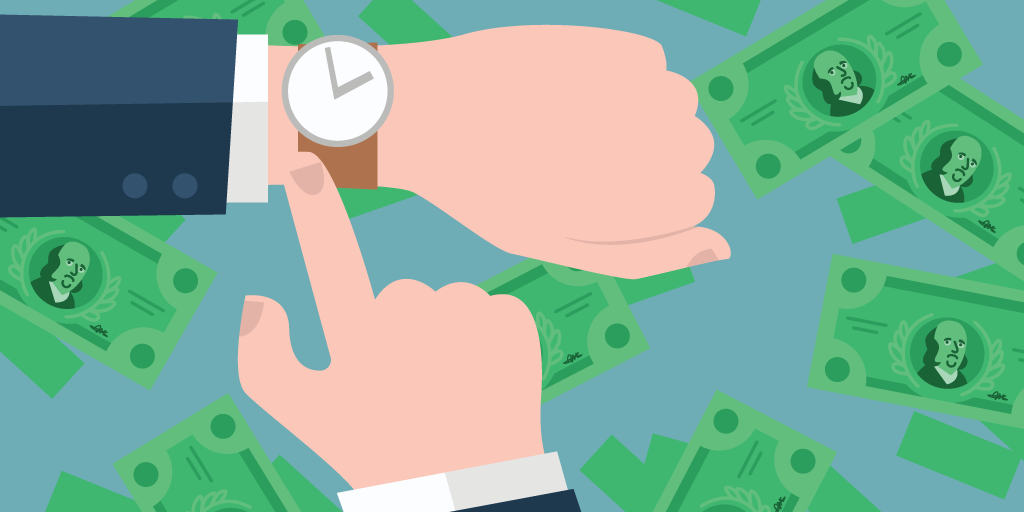Today, we’re laying out the dos and don’ts of what makes an effective queuing experience. These are the principles that could be stapled to the corkboard in the break room as you develop your queuing strategy.
While we’ve listed quite a few rules, don’t be intimidated! They’re simple enough to follow, and all stem from one simple principle: strive to create the best possible customer experience.
Speaking of great customer experience, why not and
1. DO Make Wait Time Clear

Nobody likes waiting in ignorance, especially not customers. We want to get in and out of the store as soon as possible. Otherwise, we start to feel anxious.
Research David H. Maister wrote, “Waiting in ignorance creates a feeling of powerlessness, which frequently results in visible irritation and rudeness on the part of customers.”
The lesson here? Give your customers the knowledge they deserve.
Reduce customer waiting time by being transparent: inform employees with the knowledge they need to answer questions like, “How long is the line,” and “Am I stuck in purgatory?”
One of the best ways to reduce queue waiting times is to integrate your queues with an automated queuing system. But before we can explore QMS we have to ensure one strategy that must be avoided…
2. DON’T Use a Take-a-Number System
Some things bear repeating, aren’t they? So once more, with feeling.
Take-a-number systems are relics that should only exist as exhibits in a museum. You know these already. Each customer an impersonal number, and demand that those customers watch a screen like a hawk waiting for their corresponding number to be called.
Instead of being a means to reduce customer waiting time, take-a-number systems ironically increase it.
Let’s say your number is 023. Well, more often than not, 024 and 024 are called first, because the numbered system isn’t taking customer priority into account — unlike, say, healthcare clinics where emergency cases are given priority treatment.
The take-a-number is horribly impersonal. Being designated as a number is supposed to be reserved for dystopian novels, not trips to the store. Personalization matters to customers, especially today.
The point being, stay away from the take a number system.
3. DO Use a Queue Management System

A queue management system (QMS) is at the heart of effective queueing. The queue management software manages every aspect of the queuing experience. While also providing insightful data to improve not only the customer’s experience but the employee’s experience as well.
Utilized properly, QMS reduces customer waiting time and drastically increases perceived waiting time customer satisfaction.
Many advances in queueing theory rely on the latest technologies (QMS) to overhaul a business’ strategy. Being open to exciting technological advances is pivotal if a business is going to create an effective queueing strategy.
4. DON’T Rely on What Already Works
Just because something seems to be working “good enough” doesn’t mean it can’t be improved.
All people have a habit of sticking with what they’re comfortable with. But creating an effective queueing experience means pushing the boundaries of what your store is habituated to.
The only part of your business that ought to remain the same is your company’s culture—so long as it’s a culture that aims to provide the best possible customer experience.
With this paradigm, the other pieces of the puzzle needed to reduce customer waiting time will fall into place.
5. DO Use a Single Serpentine Line
The most efficient way to line up customers is a single serpentine line. You don’t need to believe us at face value. Studies have shown that a single line is the most efficient strategy.
With a single line the desire for first come, first serve can’t be undermined by people cutting in line or jumping from one line to the next to try and get out the door faster. If a serpentine line is integrated with a queue management system, your business will excel at customer service.
If a single register has issues (e.g. the employee is waiting for assistance from a manager) customers don’t moan and groan as they watch people who queued after them check out before them.
Part of what people want to see in a queuing system is justice. And at a basic level justice means fairness. Incorporate fairness into your queue wherever possible. Not only will it ensure customer satisfaction, but make the process smooth.
6. DON’T Use Multiple Lanes

At the opposite end of the spectrum from a serpentine lane, we have a tepid queueing formula: multiple lanes at checkout. Each lane leads to its own register.
On paper, it might seem like multiple lanes and multiple registers are efficient, but on-paper doesn’t take human psychology into account. Customers jump from one line to the next or give up when they see too many crowded lanes.
It’s a queue management system that doesn’t take fairness into account.
Multiple lanes and multiple registers do the reverse of applying queueing theory to customer service. It’s a sloppy system that only excels at inefficiency.
7. DO Use Self Sign-In
It’s the 21st century. And multiple technologies exist to enhance customer’s queuing experience.
One of the most prominent is self sign-in kiosks. These are terminals located near the entrance of a store that asks customers to sign in with their names and perhaps the purpose of their visit.
Self sign-in brings your business into the future. It also gives customers autonomy. They’re not forced to wait in a preliminary line to tell a front-end worker, that they’ve arrived.
At the same time, customers sign in with their names. Remember, our names are the most intimate thing we own. They are fundamentally who we are.
When customers sign in with their name and employees call them by this name, this creates warm, congenial atmosphere.
8. DON’T Make Customers Wait in Line to Check in

Self sign-in is a great tactical advantage because it does away with the initial line to check in. As we already know, waiting in line is aggravating, sometimes even nauseating.
Businesses that remove lines with queue management software are already well on their way to optimizing their queuing strategy.
Not only are customers freed by self sign-in but front-end employees are freed to focus on what matters. They don’t have to sit there manually checking in customers and then directing them to the best help available. Instead, the system automates the process.
That means frontend employees are no longer burdened by an easily automated procedure and are able to focus on what matters: providing the best possible customer experience.
9. DO Notify Customers When It’s Their Turn
Nowadays, it’s easier than ever to reach out to customers: through social media, comment forms, and review sites. Meanwhile, queue management systems let businesses reach out to customers directly to let them know when it’s their turn to be served.
If customers are prompted to give their number at the sign-in kiosk, QMS will send an SMS (text message) to customers when they’re wait is over.
The notification systems allow customers to take care of other tasks, or freely wander the store while they wait. They’re not forced to sit in a chair, waiting to be called.
Time is valuable, and customer’s feel this motto acutely. So, use systems to free up customer’s time.
10. DON’T Leave Customers to Figure out Their Journey Alone
The worst thing businesses can do is ignore their customers. Always be there to help them with what they need by setting up opportunities to direct customers along their journey.
That means stationing employees strategically throughout your store to assist them. Having an employee near the front entrance and exit is obvious. But also ensuring that employees are on the floor to help customers is essential as a way to reduce customer waiting time.
Of course, it’s not just employees. Clearly marked signage and an intuitively structured store layout can be just as helpful in assisting customers.
11. DO Match Customers With the Help They Need

Customers arrive at your business on a mission. They typically know why they’re walking in the front door. Learn your customer’s needs and then match them with the employee who can best help them.
Doing so needs to be a smooth, swift process. Nobody likes to sit on the phone with customer service waiting 30 minutes for somebody to patch them through to the employee who can finally answer their questions.
Queue management software kiosks can be set to ask why customers have arrived at your business that day: such as arriving at a healthcare facility for a particular doctor.
This gives front-end employees the information they need to direct customers along their journey to the service they need.
12. DON’T Overwhelm Your Employees
Customers can’t get the help they need if employees are overwhelmed. Unfortunately, many businesses do overwhelm their employees, rendering them unable to carry out their duties to the best of their abilities.
Here’s a simple formula: overwhelmed employees are unhappy employees, are less productive employees.
Give your employees the tools, resources, and autonomy to carry out their tasks optimally. That means assigning a reasonable role with clear directions. And it also means trusting your employees to make decisions on their own.
Stopping a customer’s journey because employees lack knowledge or the freedom to make decisions is a roadblock that needs to be overcome to guarantee a smooth journey.
The aforementioned are just a few dos and don’ts of effective queueing. But there is one principle we can take away that summarizes effective queuing.
Understand your customers, understand what purpose your store serves, and then strive to meet those customer’s needs.
Perhaps the most helpful queueing tool to reduce customer waiting time is a queue management system, like Qminder. You can find our about Qminder by
Don’t worry! You don’t need a credit card to test Qminder. Simply sign up and see for yourself how queue management software can revolutionize your queueing strategy.






